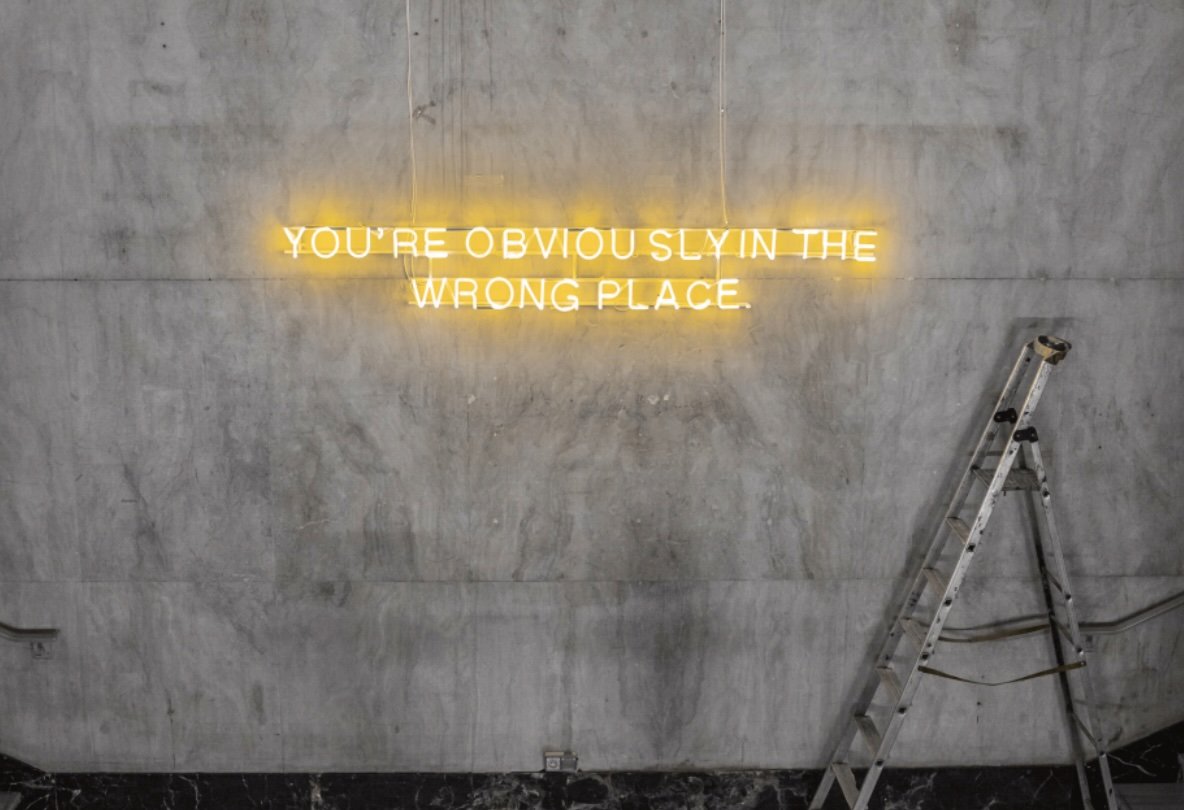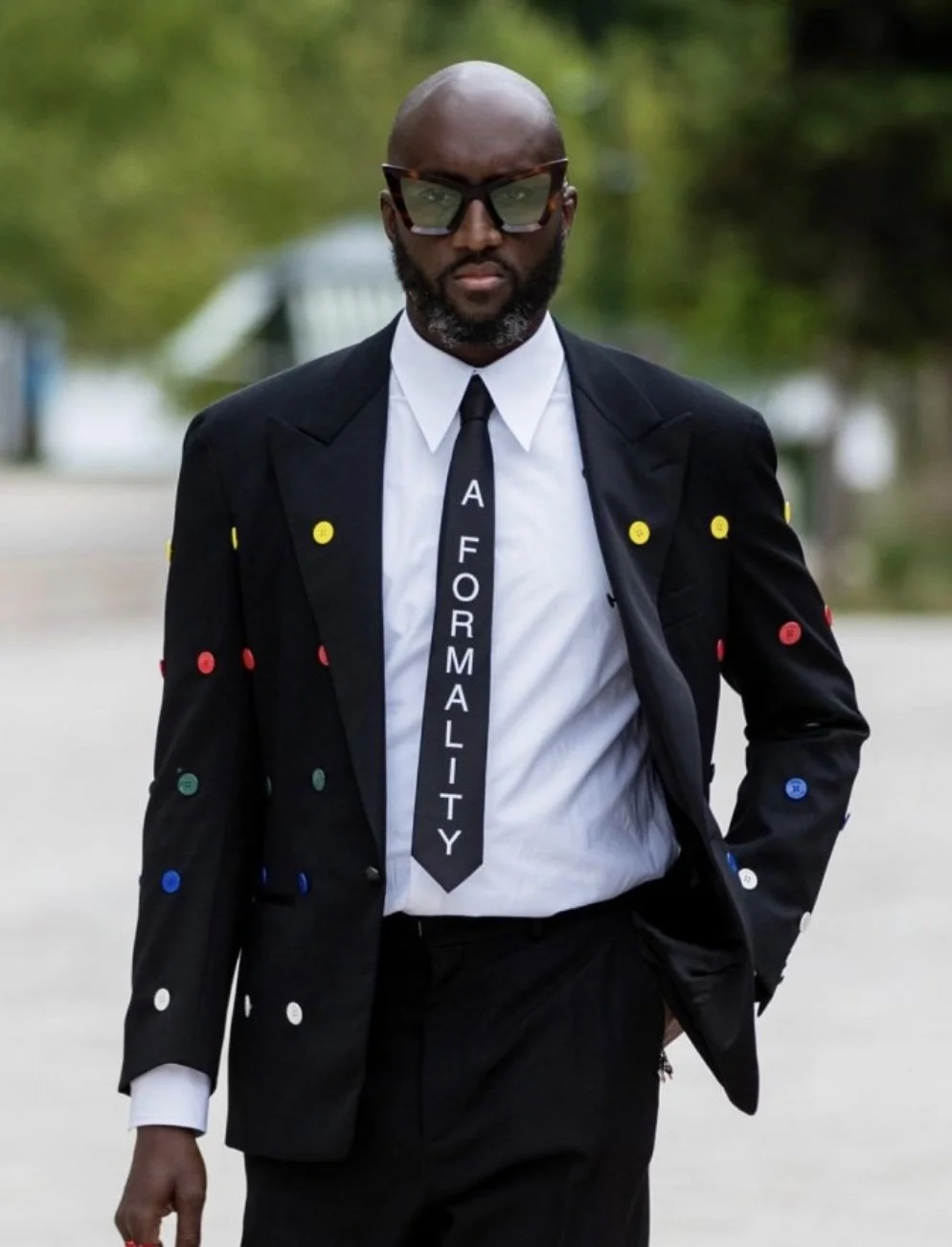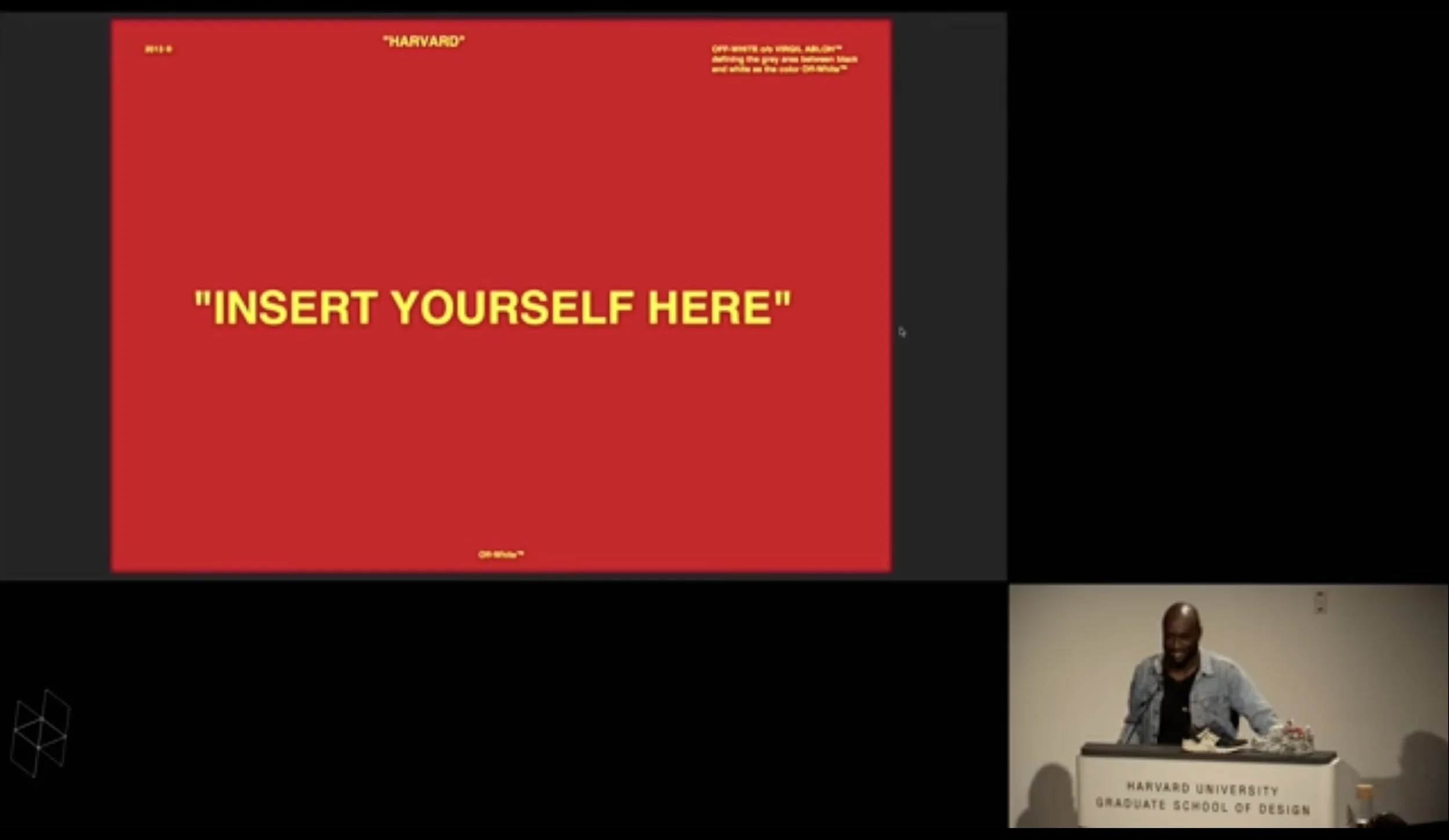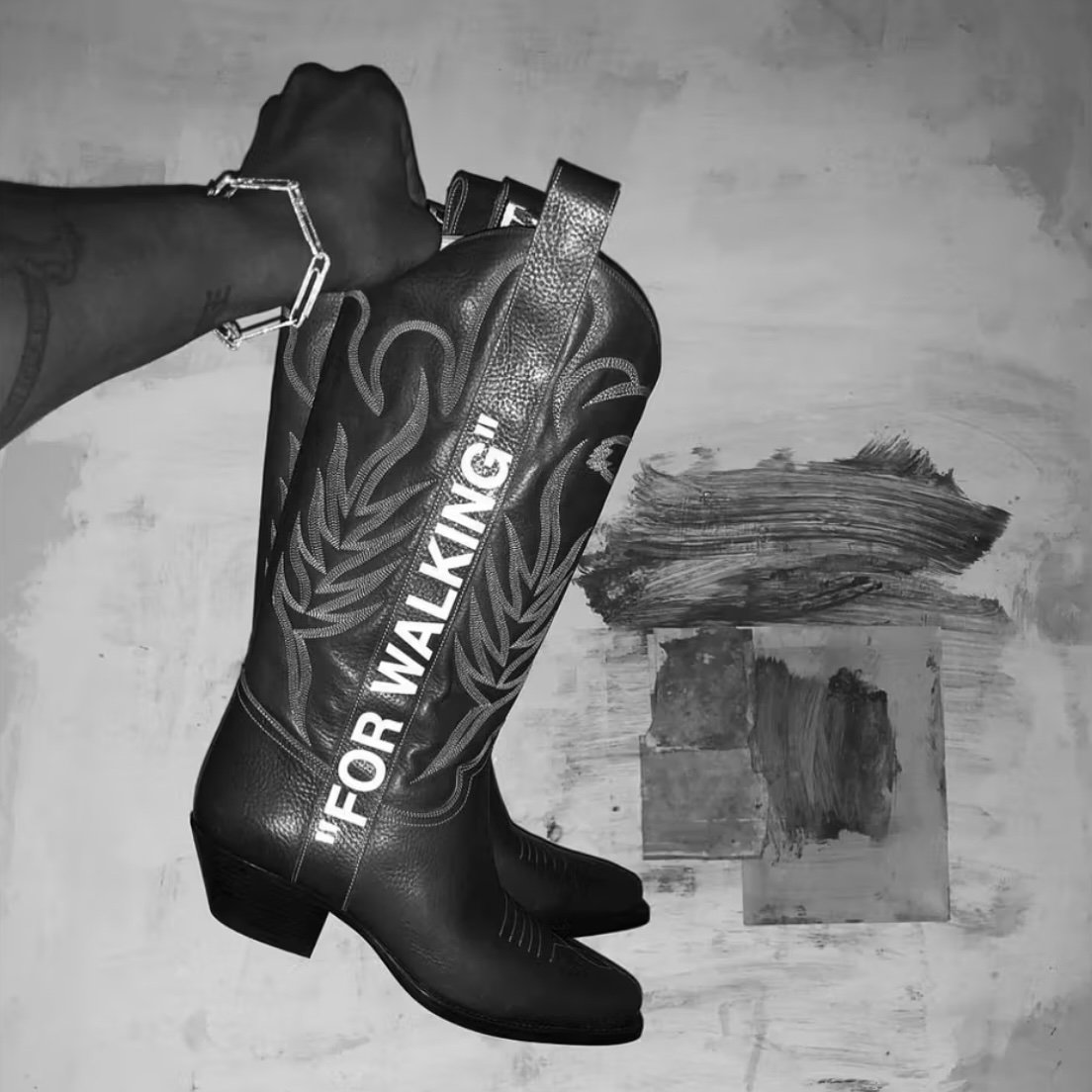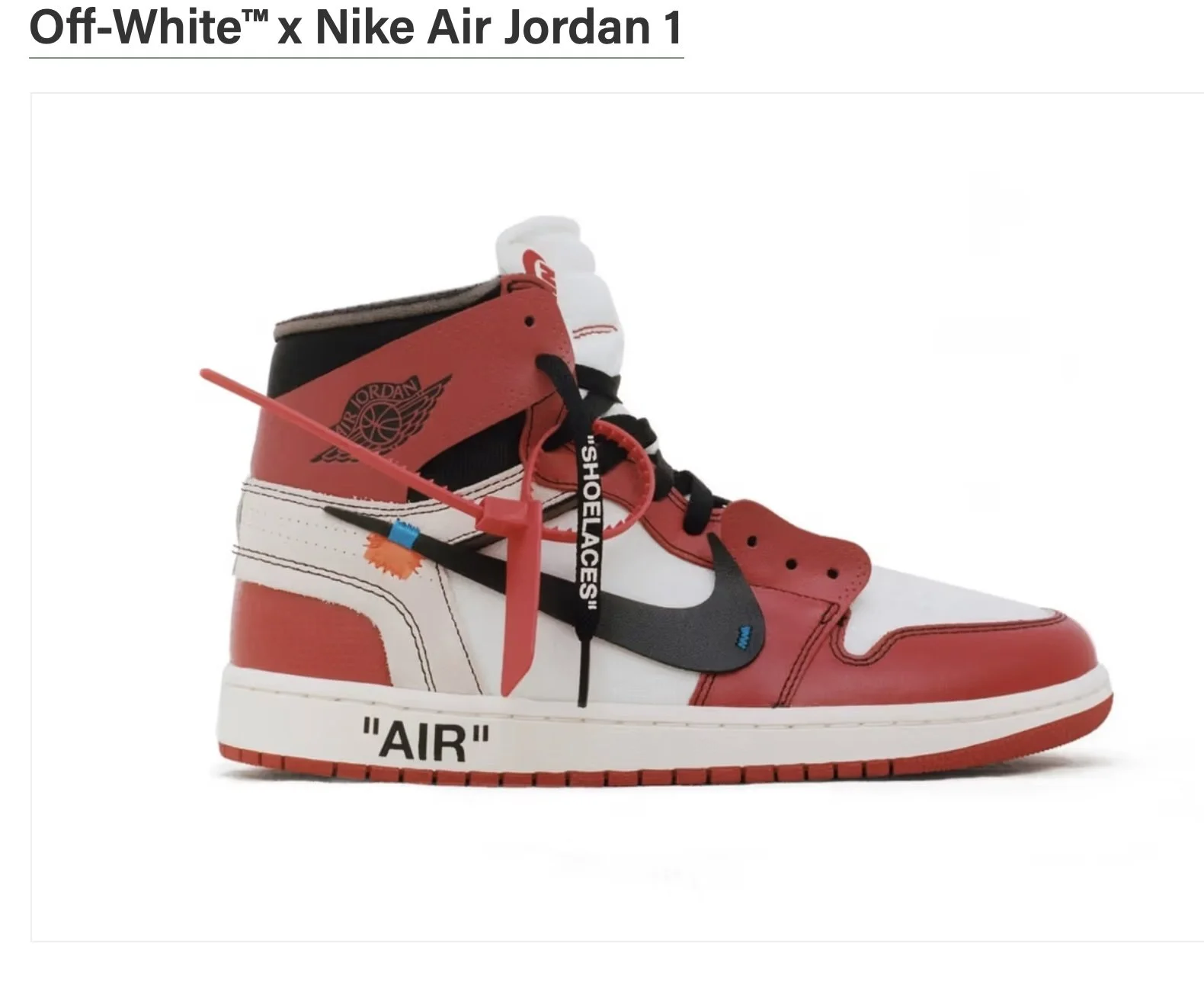The Virgil Abloh Playbook: 12 Game-Changing Lessons for All of Us (Part 1)
A Weekly Newsletter for BOLD Thinkers | July 13, 2025 | Volume 25 Issue 07
by Stephanie Sabrina Warren
Above: A quote from the movie 'Pretty Woman' that was repurposed by Virgil Abloh in his 'Freedom of Speech' exhibit at the MCA. Virgil's work questioned who belonged in certain spaces.
Virgil Abloh didn't just design; he engineered a new approach to creativity, inclusivity, and business. His life offers a powerful blueprint for defying expectations and creating impact. This playbook distills his most crucial strategies that can help you to rethink what's possible for your own path.
1. Question the Gatekeepers
Every industry has its gatekeepers, those who dictate who belongs and how success is measured. Traditional luxury fashion historically valued pedigree and rigid, classical training above all else. Then came Virgil Abloh: a trained architect and engineer who found his way into fashion as a medium to express his ideas. Within a relatively short time, Virgil started his own label, Off-White, and then found himself at the helm of Louis Vuitton menswear. His very presence as a Black man leading a heritage European brand, coupled with his pioneering of streetwear as luxury, existed to question the system. Through his groundbreaking work, he made us ask: 'Who defines luxury? How can we challenge established norms? Who decides who belongs in certain spaces?'
We're constantly bombarded with information, guidance, and opinions telling us what success should look like and which steps to take. But the old guard thrives on limiting access, dictating the narrative, and constraining potential. Sometimes, the most powerful move is to scrap someone else's playbook and write your own. Define what success looks like for you, and don't constrain your vision based on someone else's narrow definition of what's possible.
Who gets to define your path?
2. The Opposite of Gatekeeping is Holding the Door for Others
The only thing more radical than getting in is making sure others do, too.
True leadership isn't just about breaking down barriers for yourself; it's about actively creating pathways and opportunities for others. Virgil understood what it felt like to be an outsider. When he ascended to the pinnacle of luxury fashion, he didn't simply claim his spot. He intentionally brought his community with him. His fusion of streetwear with high-fashion democratized luxury, making it accessible to a broader audience who had long been excluded. During his debut Louis Vuitton menswear fashion show in Paris, he invited 1000 students from fashion schools to fill the space directly behind the front row, a coveted spot from which they'd normally be excluded. This gave them a clear view of the collection and powerfully signaled that they, too, have a place in the industry. This wasn't merely a gesture; it was a profound statement: "If I'm in, you're in." He showcased what was possible, inspiring countless young people who saw themselves reflected in his journey. Through Off-White, Louis Vuitton, and various public platforms, he consistently prioritized accessibility for others. He didn't just represent, he redefined the room and filled it with new voices.
We all have a responsibility to pull up the ladder for the next generation, especially for those who have historically been marginalized. It's about empowering others to see and seize their own potential.
Who are you holding the door for?
3. Your Values Are Your Superpower
Your brand (or personal brand) isn't just about what you sell or what you do; it's about what you stand for - a vehicle for your values. This means crafting an identity that transcends products, careers, and industries.
Virgil wasn't merely a designer; he was a storyteller who used fashion as his medium. He famously stated, "I have this fashion brand, Off-White, only for storytelling." He started with a core ethos, an idea, and then his products became vehicles for that narrative. His iconic use of quotation marks around everyday objects, like "FOR WALKING" on boots or "SCULPTURE" on a bag, wasn't just a design quirk. It was a philosophical statement, forcing people to question perception, value, and culture. Virgil didn't begin with products; he began with beliefs. He reverse-engineered fashion as a vehicle for meaning. Zip ties, Helvetica fonts, quotation marks - these weren't just design components. They were ideas. A hoodie wasn't simply a hoodie, it was a thesis on identity, culture, and power. His genius lay in understanding that people weren't buying an item, they were buying into a cultural movement, an identity that resonated deeply with them.
In a crowded market, your brand's unique culture and unwavering ethos are your superpowers. When your audience connects with your values, they become more than just customers; they become a fiercely loyal community eager to champion what you represent. You're not selling things, you're selling meaning. That's what people truly buy into.
When your audience connects with your values, they become more than just customers or followers; they become a fiercely loyal community eager to champion what you represent. You're not selling things or services, you're selling meaning.
What profound idea, values, or cultural shift are you truly championing, whether in your work or your life?
4. Subtle Shifts, Seismic Impact: Master the 3% Rule
This principle involves making small, impactful alterations to existing concepts, imbuing them with new meaning and context rather than requiring a complete reinvention.
This was perhaps Virgil's most controversial principle: what he called the "3% rule," or "redesigning with minimal intervention." Inspired by artist Marcel Duchamp, Virgil believed that a tiny, strategic change, like stamping "AIR" on a pair of Jordans or adding quotation marks to a simple tie-could entirely shift an object's perception and cultural significance. While some critics labeled it a shortcut or unoriginal, Virgil viewed it as an evolution, a powerful act of recontextualization.
He demonstrated that innovation isn't always about creating from scratch. Rather, it often lies in identifying that precise "tipping point" which transforms the familiar into something fresh and thought-provoking, fundamentally changing how we view what already exists. Virgil truly believed that nobody builds something entirely from nothing. As he articulated in his Harvard lecture, "We exist off the backs of many other things and iterations before us." His approach wasn't about stealing; it was about acknowledging what came before, connecting with those existing ideas, and building upon them. It was about seeing yourself in something that already exists and then adding your unique perspective to create new meaning.
In life and business, you don't always need a complete overhaul to generate significant impact. Sometimes, a tiny, clever twist on an existing idea can yield massive results. This approach demands acute observation and strategic insight: identifying precisely where a minimal intervention can spark new conversations, unlock novel value, and create fresh opportunities. It's not about being unoriginal; it's about being brilliantly efficient and strategically disruptive.
Where can a minor adjustment to an existing project, habit, or approach unlock disproportionate new value or shift your perspective?
5. failures are just prototypes
Virgil didn't believe in being "precious" with ideas. For him, early attempts were simply prototypes, treated as steppingstones toward evolution. In fact, he didn't believe in failures at all, instead calling every output a "prototype." For Virgil, it wasn't about seeking perfection; it was about relentless progress. He was famously unafraid of "imperfection" or public missteps. He moved quickly, experimented boldly, and constantly pushed boundaries, understanding that every attempt, successful or not, contributed essential feedback to a larger, unfolding vision. He saw these as "signs of work in process," arguing that if he aimed for "perfectionism," he'd ultimately just recreate something that already existed, which was never his goal.
The fear of not being "perfect" can be paralyzing. But every stumble, every misstep, every "no" is simply feedback. Embrace the iterative process, learn from the mess, and keep moving forward. Your journey isn't a linear path to perfection; it's a dynamic process of constant evolution. As Virgil demonstrated: Get it out. Get it wrong. That's how you get it right.
What "failed" experiment, setback, or detour are you willing to view as a prototype for your next big move in life or business?
6. Expand Your Classroom and Relentlessly Ask "Why"
This principle involves continuously seeking knowledge from diverse sources, disciplines, and individuals, while relentlessly questioning assumptions.
Virgil was a lifelong learner, constantly expanding his "classroom." He drew inspiration from a vast array of mentors—older, younger, living, deceased—and across different disciplines like art, music, architecture, and design. He believed that reflecting on why you are drawn to a particular mentor or idea reveals deeper truths about yourself and your purpose. His foundational question, "Why?" was a constant probe. He didn't just ask "how" someone did something; he asked "why." "Why do we wear hoodies? Why do we love designer brands? Why this? Why now?" This insatiable curiosity led him to peel back layers, trying to understand the essence of cultural phenomena and creative choices, allowing him to cross-pollinate disciplines in ways others couldn't even imagine.
Your growth depends on your willingness to always be a student. Don't limit your learning to your immediate industry or peer group. Seek out diverse voices, cross-pollinate ideas from unexpected places, and never stop asking "why." This intellectual curiosity is how you innovate, stay relevant, and ensure your work continues to resonate deeply with your audience. The more you learn outside your bubble, the more original and impactful your work becomes.
Beyond your immediate field or comfort zone, how are you actively expanding your 'classroom' of influences and deeply questioning the 'why' behind what you encounter, both personally and professionally?
Come back next week for part 2 of this newsletter series where we'll explore lessons 7-12 from Virgil's Playbook.
If you want to learn more about Virgil Abloh's work, I encourage you to check out the following:
"Make it Ours" by Robin Givhan - part Virgil Abloh bio, part fashion history, this book is an excellent read.
Virgil Abloh: "Figures of Speech" - MCA Chicago's book on the "Figures of Speech" exhibit.
"Insert Complicated Title Here" - Virgil Abloh's Lecture at Harvard.
